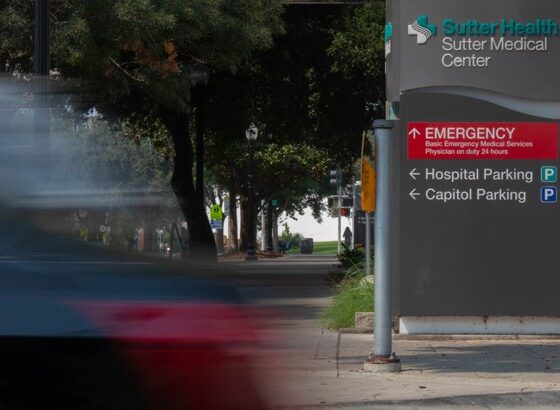Another informative article from the Wall Street Journal about the lack of pricing transparency and how difficult it is for consumers to get an estimate of charges, understand the cost, and their portion of the payment.
By ANNA WILDE MATHEWS
Bringing my newborn son home was a joy. Figuring out the hospital bill wasn’t.
Cedars-Sinai Medical Center in Los Angeles provided excellent care and thoughtful treatment during my uncomplicated traditional delivery in December. Then the invoices started coming. The hospital sent one for me, and another for my baby. The doctors billed separately. The total charge for three days: $36,625.
People lucky enough to have good health insurance, including me, don’t have to come up with such sums. Insurers typically pay a lower, negotiated price for hospital care, and patients pay a portion of that amount. Even people without insurance often get sharp discounts from list prices on their hospital bills.
Still, consumers have a big financial stake in the cost of care. People who get health insurance through their workplaces have been paying higher premiums in recent years, and more people have been enrolling in plans that include very high deductibles. A recent survey by the International Foundation of Employee Benefit Plans found that two-thirds of employers are increasing, or considering an increase in, workers’ deductibles, co-insurance and co-payments.
It’s important for patients to get good information about what they have to pay and why. That’s not easy. Before my son was born, it was difficult to figure out what I was going to owe. And I struggled after the birth to learn whether the amounts I was told to pay were appropriate. I could have done a better job at calculating some of my costs. But often, information wasn’t available, or was hard to decipher.
My own health plan is a so-called PPO, or preferred-provider organization, which means I pay less when I use doctors and hospitals that have contracts with Aetna Inc., the insurer that administers my employer’s coverage. For hospital and surgery services from these providers, I am on the hook for 15% of Aetna’s negotiated price. I also have a $400 annual deductible. Fortunately, there is a $2,000 cap on how much I might have to spend out of pocket each year for my in-network care.
From the Wallet
Having a Baby? How to Prepare for the Hospital Bill
My research started before my due date, with a call to Aetna. I asked the customer-service representative how much the birth would cost me, and she didn’t answer the question directly. She did confirm that Cedars-Sinai was in my network. Aetna’s Web site offered typical maternity costs for other Los Angeles-area hospitals, but there was no such listing for Cedars-Sinai.
The Aetna representative did say that I had $1,370 remaining before I reached my out-of-pocket maximum for the year. So I decided to set aside $1,370 toward maternity costs, and hoped that I’d have some of that left over for a crib.
It didn’t turn out that way. In fact, I owed a total of $2,118.90, a sum I arrived at only after adding figures from five separate documents. Why the difference? Along with dark hair and blue eyes, my son was born with his own $400 deductible. Also, the maximum annual out-of-pocket charge for the two of us was $4,000, double what mine alone had been. I should have re-read the fine print of my plan.
Before paying the bills, I wanted to double check them to make sure I’d actually received the services I was billed for. At my request, Cedars-Sinai sent itemized invoices, with 14 items listed for my baby and 34 items for me, not including doctors’ fees.
Those charges I could decipher seemed stunningly high. A “Tray, Anes Epidural” cost $530.29. (After inquiring, I learned this was the tray of sterile equipment used to give me an epidural anesthetic injection.) An “Anes-cat 1-basic Outlying Area” was billed at $2,152.55. (I was told this was the cost of the hospital’s resources related to the epidural.) These items were in addition to the separate anesthesiologist’s charge of $1,530 for giving the epidural. Even though the pain-killing epidural shot felt priceless during my 20 hours of labor, I was amazed that its total cost could run so high.
To decipher other items, I decided to check out consumer services that advise people about medical bills. Candy Butcher, chief executive of Medical Billing Advocates of America, wondered why the hospital listed a price of $2,382.92 for my recovery, when I hadn’t had a Caesarean section. It turned out the charge was for the 90 minutes I spent in the birthing room after my delivery. I recalled lying exhausted there while a kind nurse checked my vitals and cleaned me up. Important help, for sure, but was it really worth that much money?
Abbie Leibowitz, chief medical officer of Health Advocate Inc., had a different take on my bills. What counted, he said, weren’t the giant listed charges, but the much lower amount my insurer negotiated under its contracts with the hospital and doctors. This discounted total was about $17,300, a figure I learned about only after later reviewing Aetna’s explanation-of-benefits forms. The 15% share I had to pay was based on this lower figure. But without an itemized breakdown, I had no idea how Aetna or the hospital arrived at that sum.
According to the federal Agency for Healthcare Research and Quality, which I called for this column, even Aetna’s negotiated rate for my delivery was well above the nationwide average. That figure was $6,898 in 2006, the most recent year available from the agency’s annual medical-expense survey. The Aetna payments to Cedars-Sinai were also at the high end of the maternity costs the insurer’s site listed for other hospitals in the Los Angeles area.
Although my bills were hard to decipher, I couldn’t point to any mistakes in them, so I paid up. The experience left me befuddled, though. To be smart medical consumers, we need to be able to easily learn and compare prices for medical services. And we should have a way to effectively check our bills.
Hospitals and insurers are aware of these problems, and a number of them are trying to make pricing information more transparent. A few hospital operators, including Geisinger Health System, based in Danville, Pa., have Web sites that can generate estimated out-of-pocket costs. Baptist Health South Florida, a hospital system with headquarters in in Coral Gables, has experts on call 24 hours a day to provide cost projections that include both the fees of the hospital and the doctors who work there.
When I called Cedars-Sinai for comment, I learned that I could have gotten an advance estimate for out-of-pocket costs, though I don’t recall anyone mentioning that when I pre-registered. Patricia Emmett Kittell, vice president for patient financial services, said the hospital typically calls maternity patients before their due dates to offer the cost projections. She also said Aetna’s payment was based on a set fee per day, and wasn’t related to my itemized list of charges. Because Cedars-Sinai’s insurer contracts involve so many different payment methods, the hospital isn’t able to indicate the basis for such discounts in consumer bills, she said.
“We recognize how complex it is and how difficult it is for the patient,” Ms. Kittell said. “We’re trying as best we can to make it as consumer-friendly as possible.” She said that rates for privately-insured patients like me subsidize people covered by Medicare and Medicaid, and that the hospital also must pay for its research and teaching functions.
Aetna told me its consumer-service representative should have been able to estimate my costs, and should also have warned me about my baby’s deductible. “We view that as an error,” a spokeswoman said. She said Aetna and Cedars-Sinai are working to resolve a data issue that has kept the hospital’s pricing information off the insurer’s site.


